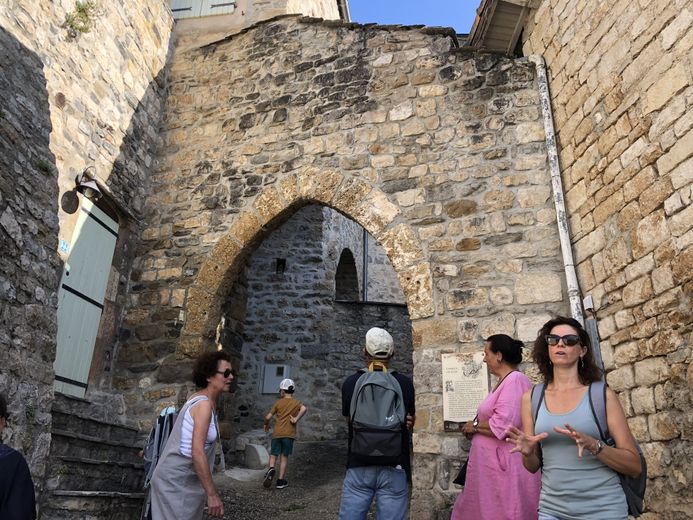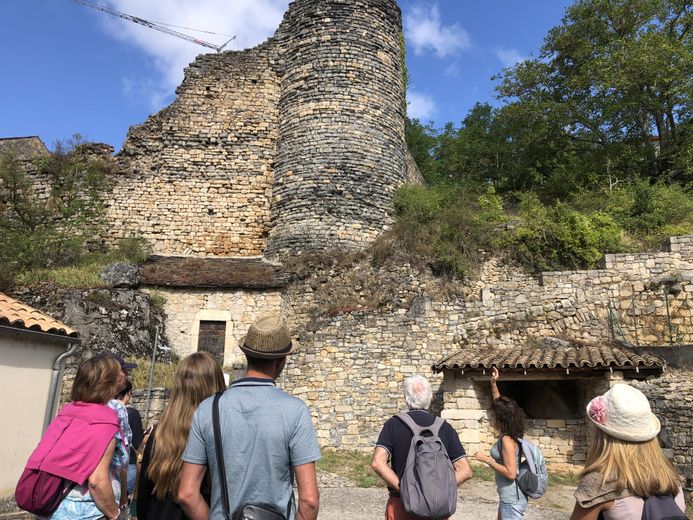Guided tour of Compeyre by a local: an extraordinary journey into the past

Sur les hauteurs de Compeyre. Midi Libre – Romane Levi
Des visites gratuites sont organisées toutes les semaines de l’été de juin à septembre, proposées par l’association Les Amis de Compeyre.
Comme sa maman avant elle, Anne-Lise Regimbeau-Vayssettes organise des visites de Compeyre, son village d’origine, en lien avec l’association Les Amis de Compeyre. Tours take place every week in the summer, from June to September.

Under one of the village gates. Midi Libre – Romane Levi
Attached to Millau until the 12th century, the village gained its autonomy from then on, becoming a great rival of the city of the glove. The group participating in the visit sets off from the entrance of the village, listening attentively to the explanations of the guide. “The fleurs-de-lys on the village's coat of arms are explained by the fact that Compeyre became a royal city in the 14th century”, comments the young guide.

The tower of the village of Compeyre. Midi Libre – Romane Levi
The village offers a panoramic view, strategic at the time, on the Grands Causses. “To the south, you have the Causse du Larzac, to the east the Causse noir and further west the Causse de Sauveterre and Massegros”, presents the guide. In the Middle Ages, Compeyre extended to the border of Millau, encompassing Aguessac, Paulhe and Carbassas until the 19th century.
A village with multiple successes…
As the tour leader explains, wine culture was very important in Compeyre. "The producers of the valley came to drop off their wine to have it improved here." The village was experiencing an extraordinary boom, with fairs attracting many producers and artisans, as well as a large cattle market. Even today, the cellars present in many places in the village give an idea of the wealth that wine represented. “There are around 200 of them in the village”, the guide tells the wide-eyed visitors.
Anne-Lise Regimbeau-Vayssettes asks the group to use their imagination to visualize the vertical stones that were placed in the ground to allow the oxen to rest by wedging their feet on them while climbing. These stones were called calades. It is still possible to observe the original stones in some places in the village.

The group sets off to visit the village. Midi Libre – Romane Levi
The religious wars of the 16th century led to the end of Compeyre's prestige. "Documents have been found that said that blood and wine flowed through the calades".
Today, the village still offers a panoramic view, a strategic view at the time, over the Tarn and Lumençon Valleys, which attract history buffs and holidaymakers.




